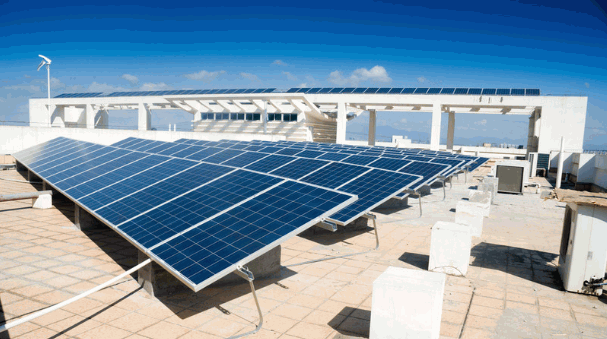
Most people have heard of solar panels, but few of them realise that not all solar panels are the same. In recent times, photovoltaic systems (also called solar PV panels) have become seriously popular.
So, is there a difference? And why should you care? If you're considering having solar panels installed, it's a good idea to understand the differences to ensure that you're making the right decision.
At Skylamp Solar, we know everything there is to know about both types of solar panels, and we believe it's our duty to spread the word about renewable energy technology and how it will benefit us all.
We're here to explain exactly what the differences are between the two systems and to tell you why they're important.
It's a fact: without the sun's energy, we would not exist. Life could not function on this planet without the sun's heat and light. Our ancestors realised its importance and even experimented with solar rays thousands of years ago.
It took us a while, but in the twentieth century, we eventually figured out a way to use sunlight to heat water and air efficiently. Special cells were set within a panel - usually on a roof - and these absorbed the sun's rays to heat liquid that was then used to make hot water. This invention took off in the 1970s and gradually gained momentum in the UK over the next few decades.
These were called solar thermal panels (or solar collectors), although most people dropped the 'thermal' part, and still often do - hence the confusion between the two types.
Solar thermal energy has been around in the UK for several decades and is still popular today. However, it is rapidly being overtaken by the solar PV system.
Related service: “Thermal Solar Panel Installation”.
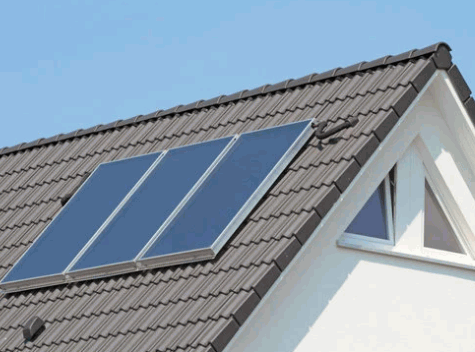
How are solar PV panels different to solar thermal?
The biggest clue is in the name, photovoltaic, which is where the abbreviation PV comes from (and it's easier to say!).
The term refers to the photovoltaic effect, which happens when light particles from the sun strike the PV cells. These cells contain a semiconductor, which is a material (usually silicon) that conducts an electrical charge under certain conditions.
The light particles (photons) knock electrons off the atoms on the surface of the semiconductor, producing an electrical charge. Basically, the cells become like mini batteries with a negative and positive end.
The charge from each of the solar cells is collected as DC electricity that is channelled through an inverter that converts it to AC electricity for use in the home (or commercial building).
And there you have the essential difference between solar thermal energy and solar PV: one provides heat only, while the other provides electricity that has multiple uses, making solar photovoltaic panels more versatile and, perhaps, a better investment.
While they both use solar power, as in the sun's rays, the technology is vastly different.
If you would like to know more about how solar panels work, see our separate blog called what is solar PV as we go into detail on the subject.
Related service: “Solar PV Installation”.
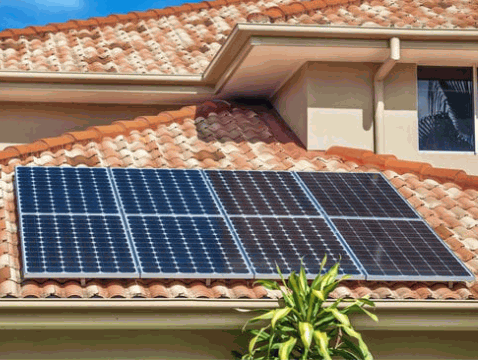
This is a tricky one, as there are several things that complicate the issue.
First, it depends on the size of the system being fitted and the maximum power output of the array. After this, there are many other factors to consider.
Here are some approximate figures as a general guide:
Solar thermal systems typically cost between £3,000 and £6,000, with the average price for the UK coming in at around £4,500. This price includes (or should include) installation, materials, pipes, panels and a hot water tank.
The figure is based on a system with a 250-litre cylinder and a 5m² solar thermal collector.
Next, you have to consider battery storage for PV panels. This adds a considerable expense, somewhere between £1,000 and £6,000, but without this, you are still reliant on power from the national grid and you won't be able to sell excess electricity back to the energy companies.
Related post: “how much does a solar panel installation cost”.
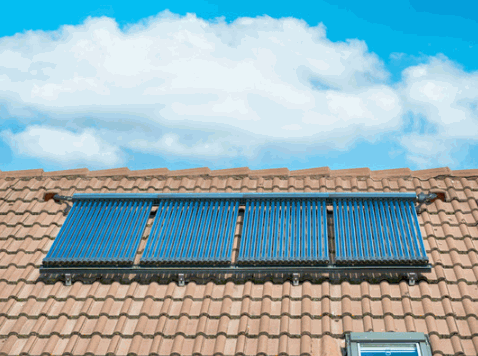
This could be a deciding factor for many consumers!
In general, solar PV panels last for between 30 and 40 years, while solar thermal panels have a lifespan of around half this time, at approximately 20 years.
Also, while PV panels generally require very little maintenance throughout their life, thermal panels have a lot of moving parts that may need regular attention. According to some experts, this can add up to between £100 and £200 per year to keep your system running smoothly, while others suggest that a checkup every three years is fine.
Even so, opinions and advice about solar panel maintenance vary drastically depending on who you ask. Some suggest that anyone trying to get you to sign up for a regular maintenance program is only after your money, as it isn't really necessary. In the end, it will come down to using common sense and getting advice from your installer.
Still, most experts recommend that both types of panels are inspected and serviced fairly frequently as this helps to avoid long-term problems and keeps them running at maximum efficiency. Solar thermal systems will need to be flushed out at least every five years as the glycol (which stops the liquid from freezing) will become less efficient.
Some sources even suggest that solar panels don't need to be washed as they are self-cleaning, but this is misleading; they are designed to be hydrophobic, meaning that rainwater can't stay on the surface. However, that doesn't mean that every bit of dust and dirt will be washed away, and it certainly won't work for bird droppings! Leaves can be a problem, too, as they stick to the surface and begin to rot.
Related post: “how much does it cost to pigeon proof solar panels”.
You can help by washing the panels a couple of times a year with warm soapy water to remove all the muck and debris. But only do this if your roof space is easily accessible and you can do the job safely. On balance, it's usually better to arrange a regular cleaning schedule with the installers or find a local cleaning service to perform the task.
It looks like photovoltaic cells are the winners here!
Let's examine the facts:
Although thermal energy solar panels usually operate between 70% and 90% efficiency (especially if you install flat plate panels), they only provide domestic hot water in most cases. It is possible, under certain conditions, to connect solar thermal technology to your central heating equipment. So, as well as heating water, this system can also heat your home.
However, there's a catch: your hot water cylinder and heating system must be compatible with the solar thermal panels. This means extra expense, as you may need to install an entirely new central heating system.
Once your solar thermal panels have been fitted, you will begin to benefit from lower energy bills.
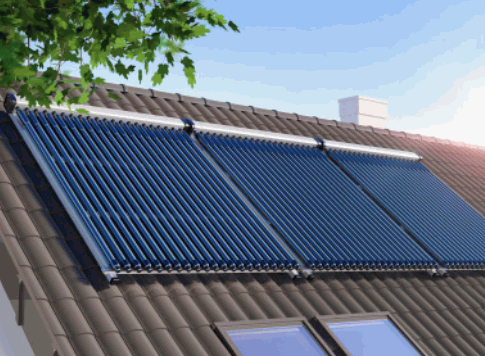
These are significantly less efficient than solar thermal technology, operating at between 15 and 20%. Even so, they are still a worthwhile investment when fitted professionally and used correctly. In fact, installing solar PV panels can cut your energy bills by at least 70%.
The beauty of solar PV technology is that it is versatile; the photovoltaic effect produces electricity rather than heat, and this can be used to power your home or business.
What's more, on days when the system produces surplus energy, this can be sold back to the grid, so you recover your installation costs sooner as well as getting free solar energy!
The catch here is that you need battery storage, which, as we've seen, involves significant expense.
Even so, you become 100% energy independent and you can make money through schemes like the Smart Export Guarantee (SEG). This scheme replaced the Feed-in Tariff (FiT) that ended in 2020.
The FiT scheme was, in some ways, better as it operated on a fixed-rate tariff. Under SEG, the energy suppliers set their own rates, so you need to shop around for the best one.
The bottom line is that the solar photovoltaic system offers a quicker return on your investment, allowing you to recover the initial cost sooner - as long as you are using SEG (or a similar scheme) to sell excess solar energy. Some sources suggest that without SEG, you may need to wait for between 20 and 60 (yes, SIXTY) years to break even, and that with SEG you can cut that waiting time to around 15 or 16 years.
However, the current turmoil surrounding inflation, the cost of living crisis and soaring energy prices means that you are more likely to break even within a decade, possibly in as little as 5 or 7 years!
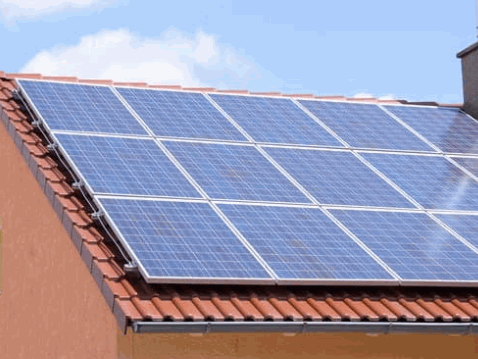
On paper, you might imagine that solar PV panels are the better of the two, and that would be a justifiable conclusion. However, both are excellent ways to reduce your carbon footprint and dependence on fossil fuels. They also potentially offer huge savings on your energy bills.
As to which is the best, it really depends on your individual needs and your budget.
Here's a summary of the two types to highlight the differences:
So, that's the solar thermal panels in a nutshell, now let's see how they stack up against their photovoltaic counterparts.
The main difference between the two is that solar thermal panels are only good for heating water, while solar PV panels produce electricity. However, as you can see, there are several other factors to consider here and it's not easy to suggest a clear winner.
To complicate the issue further, solar PV technology is continually being improved and updated as it's a relatively new renewable energy source compared with solar thermal technology.
Whichever solar system you choose, you need to make sure that it's a sound investment. We've described the differences between the two as clearly as possible, but if you need to know more then contact the team at Skylamp Solar who will be happy to offer guidance and advice as to which solar panels would be the best choice for you.
We can also advise you about any grants or incentive schemes available that can help cover the expense of installing solar panels. Skylamp Solar won't just fit your solar panels, we will help you to get the maximum benefit from your system. After all, this is a significant investment, so it's important to get it right.
One thing is clear, and that's the fact that renewable energy or sustainable energy is the way forward. We need to seek alternatives to fossil fuels as a matter of urgency, not only because of rising gas and electricity costs but also to reduce the devastating impact on our planet.
Investment in green energy tech will only increase, and more incentives will be made available as the government strives to achieve its own environmental targets.
One encouraging sign is that many of these sustainable energy technologies are being combined to maximise the benefits. In fact, it is already possible to combine solar PV panels with solar thermal panels and a heat pump.
Hybrid panels are also available, offering superior efficiency as they are a combination of solar PV and solar thermal panel technology. These are called photovoltaic thermal panels, or PV-T for short. So, with this system, you get hot water and electricity generation from your solar system!
Related post: “what is a hybrid solar system”.
Related service: “Hybrid Solar Panel Installation”.
This is excellent news, as it helps you maximise the benefits of each system and become truly energy independent. Skylamp Solar can advise you on this subject, so be sure to call if you need our help.
In the future, we may not be too worried about the difference between solar PV and solar thermal as they will be developed to form a single achievable renewable energy source, which would be the best outcome for everyone.